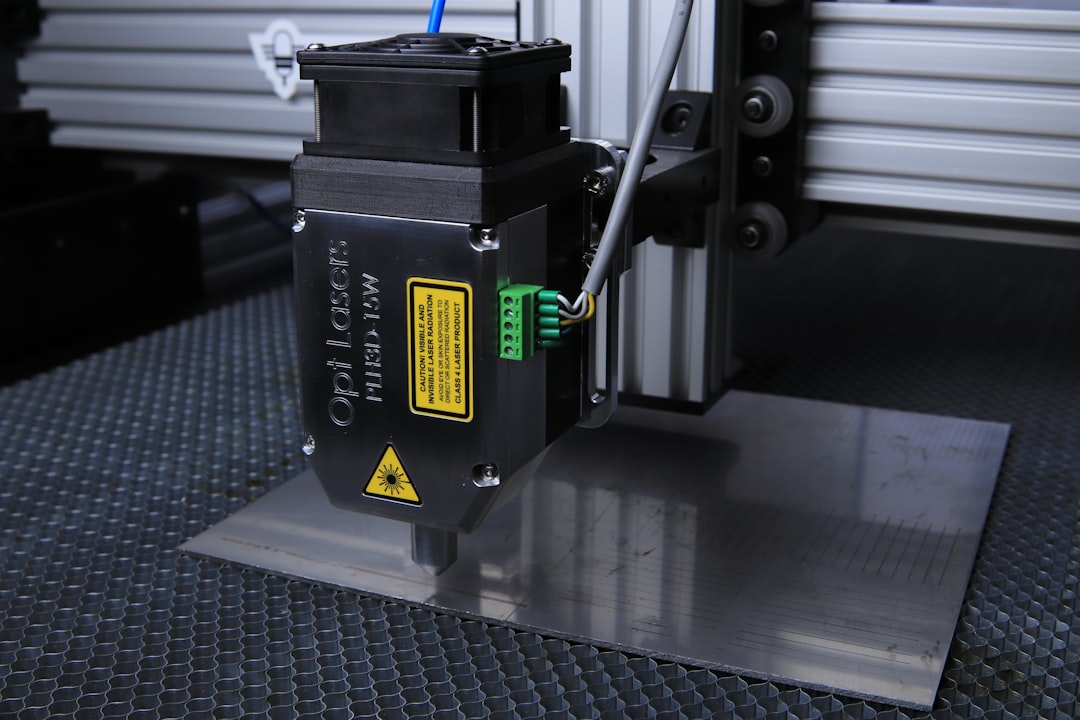Laser hair removal has become a popular choice for those seeking a long-term solution to unwanted hair. If you’ve ever found yourself frustrated with the constant upkeep of shaving or the discomfort of waxing, you might be considering this innovative method. The procedure utilizes concentrated beams of light to target hair follicles, effectively reducing hair growth over time.
This technology has evolved significantly, making it a viable option for various skin types and hair colors. As you delve into the world of laser hair removal, it’s essential to understand its appeal. Many individuals are drawn to the promise of smooth skin without the hassle of regular maintenance.
Unlike traditional methods, which often require frequent touch-ups, laser hair removal can lead to permanent hair reduction after a series of treatments. This means you can enjoy the freedom of not worrying about stubble or ingrown hairs, allowing you to embrace a more carefree lifestyle.
Key Takeaways
- Laser hair removal is a popular method for long-term hair reduction that uses concentrated light to target hair follicles.
- The process works by emitting a light that is absorbed by the pigment in the hair, damaging the follicle to inhibit future growth.
- The benefits of laser hair removal include long-lasting results, precision targeting, and reduced ingrown hairs.
- There are different types of lasers used for hair removal, including Alexandrite, Diode, Nd:YAG, and IPL, each with its own advantages and considerations.
- While laser hair removal is generally safe, there are potential risks such as skin irritation, pigment changes, and the possibility of burns if not performed correctly.
How Laser Hair Removal Works
The mechanics behind laser hair removal are fascinating and rooted in science. When you undergo the procedure, a laser emits a specific wavelength of light that is absorbed by the pigment in your hair follicles. This absorption generates heat, which damages the follicle and inhibits future hair growth.
The process is selective, meaning it targets only the hair while leaving the surrounding skin unharmed. This precision is one of the reasons why laser hair removal is considered a safe and effective option. During your treatment, the technician will adjust the laser settings based on your skin type and hair color to ensure optimal results.
The procedure typically involves multiple sessions, as hair grows in cycles, and not all hairs are in the same growth phase at any given time. By spacing out your appointments, you can effectively target hairs as they enter the appropriate growth stage, maximizing the treatment’s effectiveness.
The Benefits of Laser Hair Removal
One of the most significant advantages of laser hair removal is its long-lasting results. After completing a series of treatments, many individuals experience a substantial reduction in hair growth, with some achieving permanent hair removal. This means less time spent on grooming and more time enjoying life without the constant worry of unwanted hair.
In addition to its effectiveness, laser hair removal is also known for its precision and speed. Each pulse of the laser can treat multiple hairs simultaneously, making it a quick option for larger areas like the legs or back. Furthermore, many modern lasers come equipped with cooling mechanisms that help minimize discomfort during the procedure.
This combination of efficiency and comfort makes laser hair removal an appealing choice for those looking to streamline their beauty routines.
The Different Types of Laser Hair Removal
| Type of Laser | Wavelength | Skin Type | Treatment Time |
|---|---|---|---|
| Diode Laser | 800-810 nm | Light to medium | Short |
| Alexandrite Laser | 755 nm | Light to olive | Short |
| Nd:YAG Laser | 1064 nm | Olive to dark | Longer |
When considering laser hair removal, it’s important to familiarize yourself with the various types available. Different lasers are designed to cater to specific skin types and hair colors, ensuring that everyone can find a suitable option. The most common types include Alexandrite lasers, Diode lasers, and Nd:YAG lasers.
Each type has its unique characteristics and benefits. Alexandrite lasers are known for their speed and effectiveness on lighter skin tones with dark hair. They emit a longer wavelength of light, making them ideal for larger areas.
On the other hand, Diode lasers are versatile and can be used on a wider range of skin types, including tanned skin. Nd:YAG lasers are particularly effective for darker skin tones due to their longer wavelength, which penetrates deeper into the skin without affecting the surface. Understanding these differences can help you make an informed decision when selecting a treatment that best suits your needs.
The Safety and Risks of Laser Hair Removal
While laser hair removal is generally considered safe, it’s essential to be aware of potential risks and side effects. Common side effects include temporary redness, swelling, or mild discomfort in the treated area. These symptoms usually subside within a few hours to a couple of days.
However, more severe side effects can occur in rare cases, such as blistering or changes in skin pigmentation. To minimize risks, it’s crucial to choose a qualified practitioner who uses FDA-approved equipment and follows safety protocols. Before undergoing treatment, you should have a thorough consultation where your medical history is reviewed, and any concerns are addressed.
This step ensures that you are a suitable candidate for laser hair removal and helps set realistic expectations for your results.
Preparing for Laser Hair Removal

Preparation is key to ensuring a successful laser hair removal experience. Before your appointment, you should avoid sun exposure for at least two weeks, as tanned skin can increase the risk of complications during treatment. Additionally, refrain from waxing or plucking hairs in the area to be treated for at least four weeks prior to your session; this allows the laser to effectively target the hair follicles.
On the day of your appointment, arrive with clean skin free from lotions or creams. Your technician may provide specific instructions tailored to your individual needs, so be sure to follow them closely. If you have any concerns or questions about the procedure, don’t hesitate to ask; being well-informed can help ease any anxiety you may have.
What to Expect During and After Laser Hair Removal
During your laser hair removal session, you can expect a sensation similar to that of a rubber band snapping against your skin as the laser pulses target your hair follicles. Many modern devices come equipped with cooling features that help alleviate discomfort during treatment. The duration of each session will depend on the size of the area being treated; smaller areas like the upper lip may take just a few minutes, while larger areas like the legs may take up to an hour.
After your session, it’s normal to experience some redness or swelling in the treated area.
You may also notice some shedding of hairs in the days following treatment; this is a sign that the procedure is working as intended.
It’s important to follow any aftercare instructions provided by your technician to ensure optimal results and minimize any potential side effects.
Maintenance and Aftercare for Laser Hair Removal
Once you’ve completed your initial series of laser hair removal sessions, maintenance becomes essential for long-lasting results. While many individuals experience significant hair reduction, some may require occasional touch-up treatments to maintain their smooth skin. The frequency of these touch-ups will vary based on individual factors such as hair growth cycles and hormonal changes.
Aftercare is equally important in ensuring that your skin remains healthy post-treatment. You should avoid sun exposure and tanning beds for several weeks following your sessions to prevent pigmentation changes. Additionally, using sunscreen on treated areas is crucial for protecting your skin from UV damage.
Staying hydrated and maintaining a healthy skincare routine will also contribute to optimal healing and results. In conclusion, laser hair removal offers an effective solution for those seeking a long-term alternative to traditional hair removal methods. By understanding how it works, its benefits, and what to expect during and after treatment, you can make an informed decision about whether this procedure is right for you.
With proper preparation and aftercare, you can enjoy smooth skin without the hassle of constant upkeep, allowing you to embrace life with confidence.
If you are interested in learning more about how to customize your laser hair removal experience, check out this article on personalizing your treatment. This article discusses the different factors that can affect the effectiveness of laser hair removal, such as skin type and hair color. It also provides tips on how to prepare for your treatment and what to expect during the process. For more fashion and beauty tips, you can also read articles like 5 Fashion Trends to Try This Season and How to Create a Stylish Home Office.
FAQs
What is laser hair removal?
Laser hair removal is a cosmetic procedure that uses a concentrated beam of light (laser) to remove unwanted hair. The laser targets the pigment in the hair follicles, damaging them and inhibiting future hair growth.
How does laser hair removal work?
During the procedure, the laser emits a light that is absorbed by the pigment (melanin) in the hair. This light energy is converted to heat, which damages the hair follicle and inhibits future hair growth.
Is laser hair removal permanent?
Laser hair removal can lead to long-term hair reduction, but it is not always permanent. Multiple sessions are usually required to achieve the best results, and maintenance treatments may be needed to sustain the effects.
What areas of the body can be treated with laser hair removal?
Laser hair removal can be used to target unwanted hair on various areas of the body, including the face, legs, arms, underarms, bikini line, and back.
Is laser hair removal safe?
When performed by a qualified and experienced professional, laser hair removal is generally considered safe. However, there are potential risks and side effects, such as skin irritation, redness, and changes in skin pigmentation.
Who is a good candidate for laser hair removal?
Laser hair removal is most effective for individuals with light skin and dark hair, as the laser targets the pigment in the hair follicles. People with darker skin tones may require specialized lasers to minimize the risk of skin damage.






